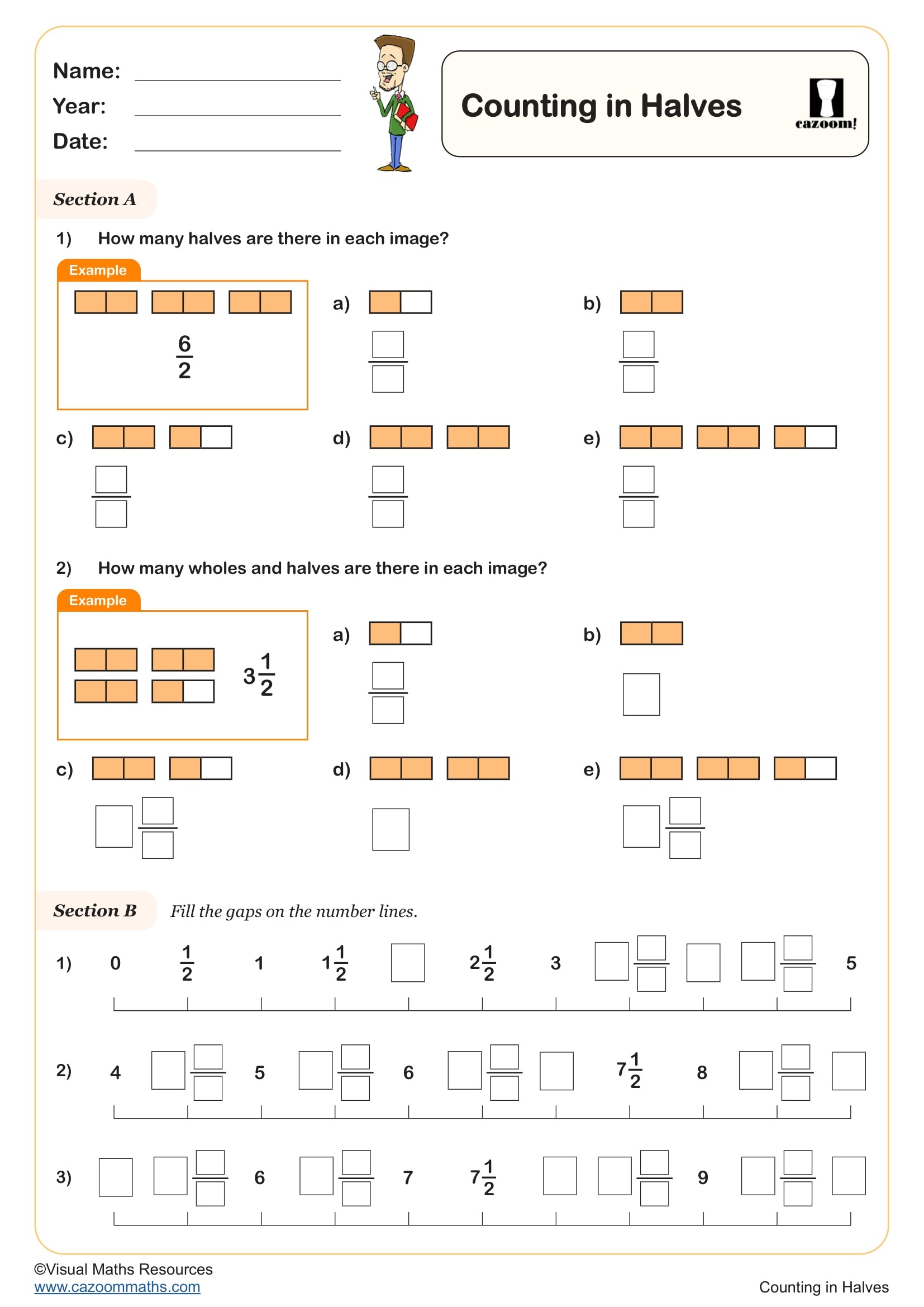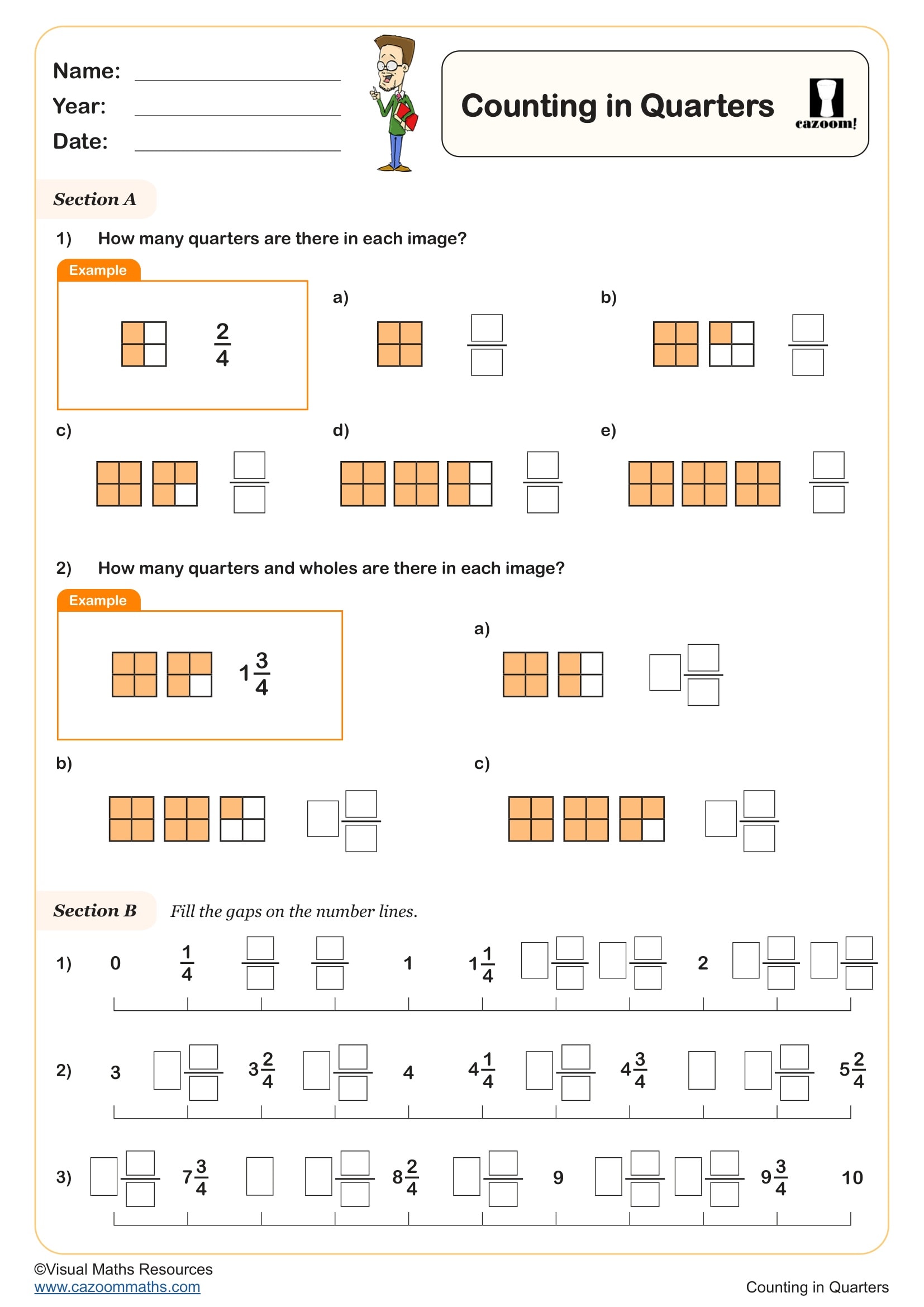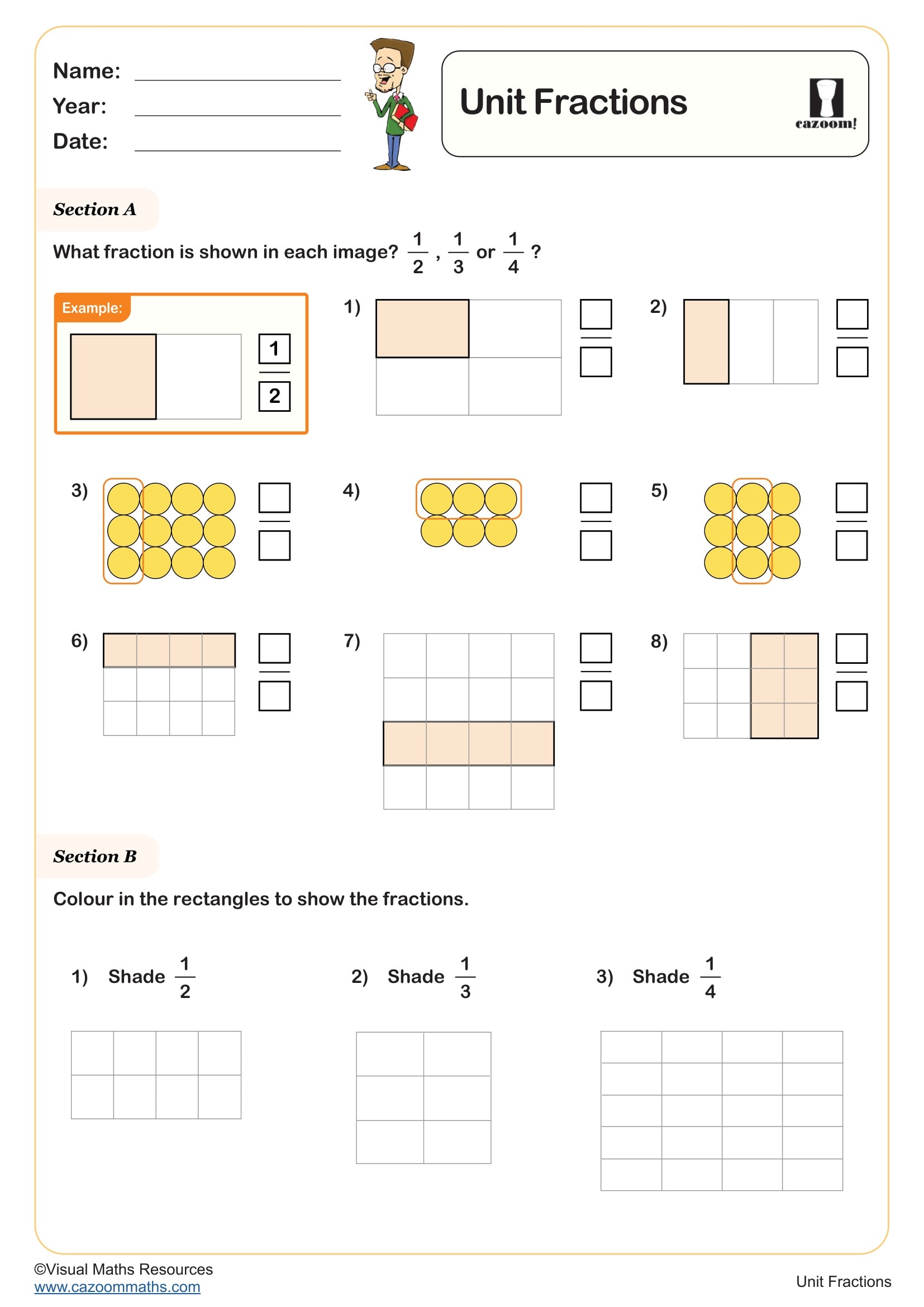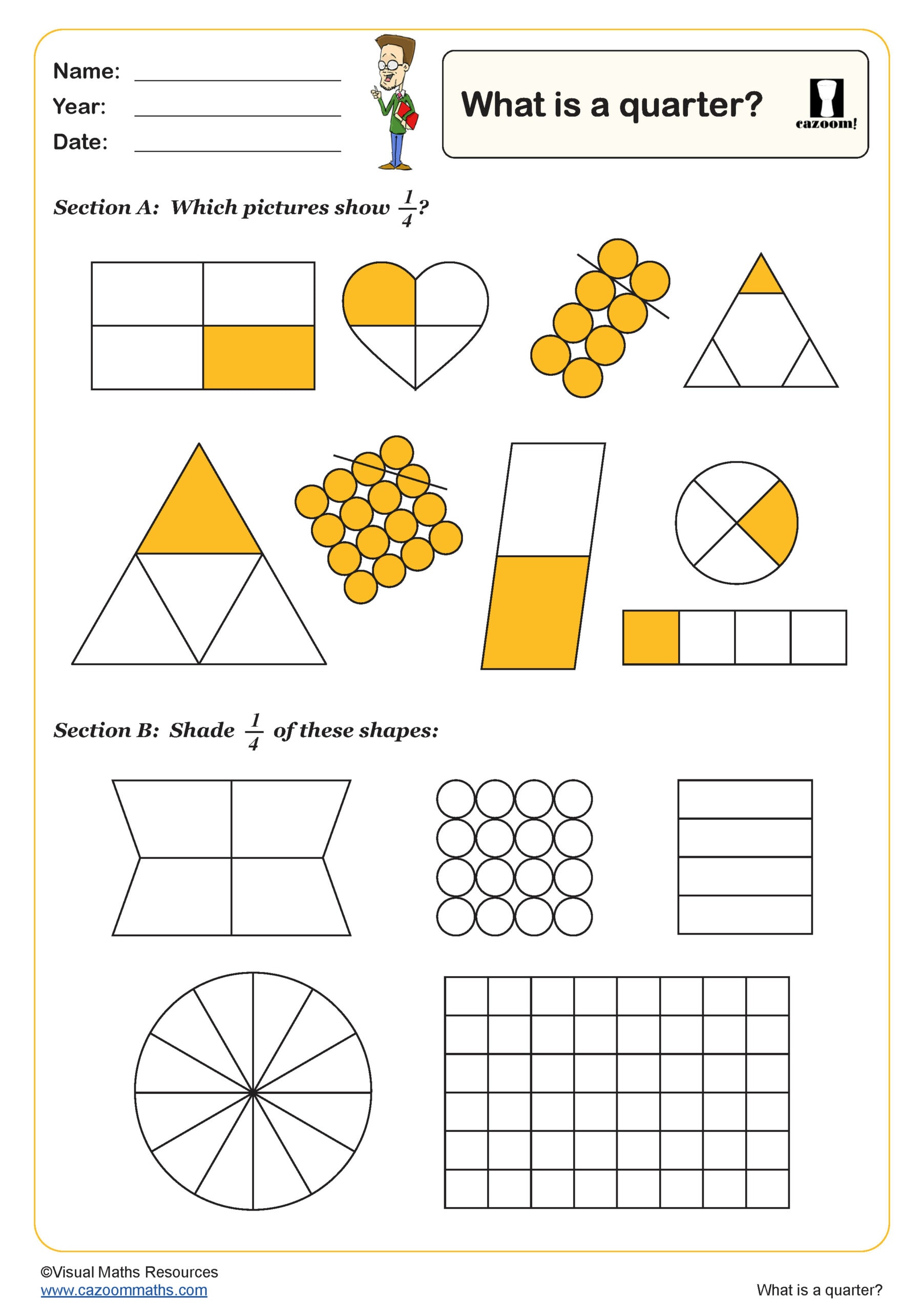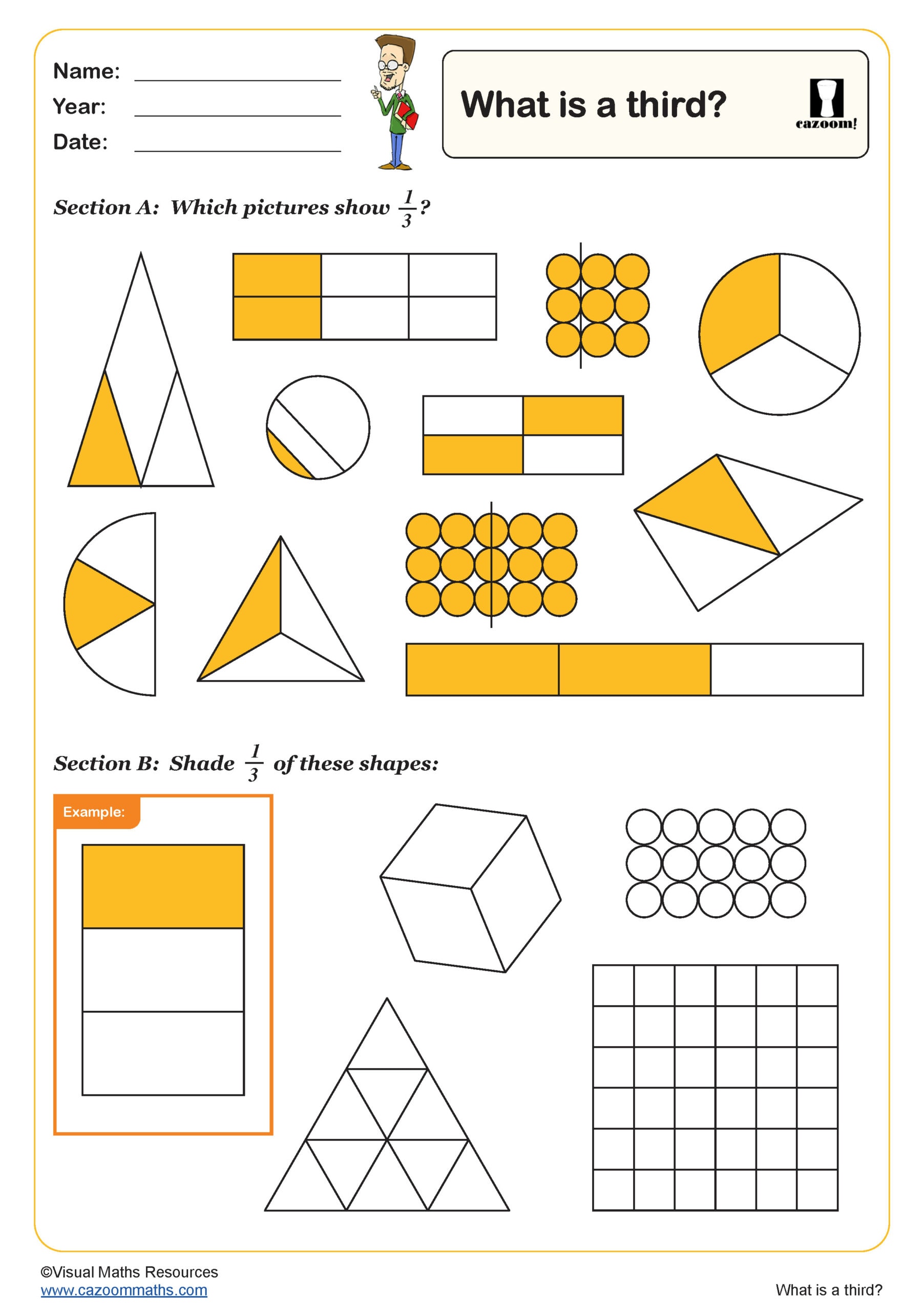Year 2 Fractions, Decimals and Percentages
Download Year 2 Fractions Worksheets with Step-by-Step Solutions
Finding quality fractions, decimals, and percents worksheets with answers PDF for KS1 learners isn't always straightforward - most resources are too advanced or lack the visual support young children need. Our collection bridges that gap beautifully! Each worksheet focuses on fundamental concepts like recognising halves and quarters, understanding equal parts, and introducing simple decimal notation through money. The detailed answer sheets show clear working methods that help both teachers and parents support children's learning journey effectively.
Core Mathematical Skills Covered in Our Year 2 Number Worksheets
We have packed plenty of engaging activities into these fractions, decimals and percentages questions and answers resources! Children progress from identifying half and quarter shapes to understanding that two halves make one whole (surprisingly satisfying when they grasp it). Our worksheets include popular hands-on activities with pizza slices, chocolate bars, and toy-sharing scenarios. Students particularly enjoy the visual fraction strips and circle diagrams that make abstract concepts tangible and memorable.
The Essential Role of Early Fractions Practice for Year 2 Learners
Here's what we have noticed after years of teaching KS1 - children who master basic fraction concepts early show greater confidence in Year 3 mathematics and beyond. Regular practice with our Year 6 fractions, decimals and percentages foundation work builds essential number sense that supports future learning. These skills directly prepare pupils for SAT assessments and create strong mathematical reasoning abilities.
• Visual recognition of halves, quarters, and thirds in everyday objects
• Problem-solving skills through sharing and grouping activities
• Mathematical vocabulary development with precise fraction language
• Confidence building through achievable, progressive challenges
• Assessment preparation aligned with KS1 curriculum expectations
Everyday Situations Where Young Children Encounter Fractions
These mathematical concepts appear naturally in cooking (half a cup of flour), playground games (sharing toys equally), and even screen time discussions (a quarter of an hour). Our worksheets connect learning to familiar experiences like cutting sandwiches, dividing sweets between friends, and understanding clock faces. It's actually quite rewarding when children suddenly spot fractions during lunch break and excitedly share their discoveries with classmates.
• Cooking and baking - measuring ingredients and portions
• Art and craft - folding paper into equal parts
• Sports and games - dividing teams and sharing equipment
• Money handling - understanding 50p as half a pound
• Time concepts - quarter past and half past the hour
• Food sharing - cutting cakes and pizzas into equal slices
